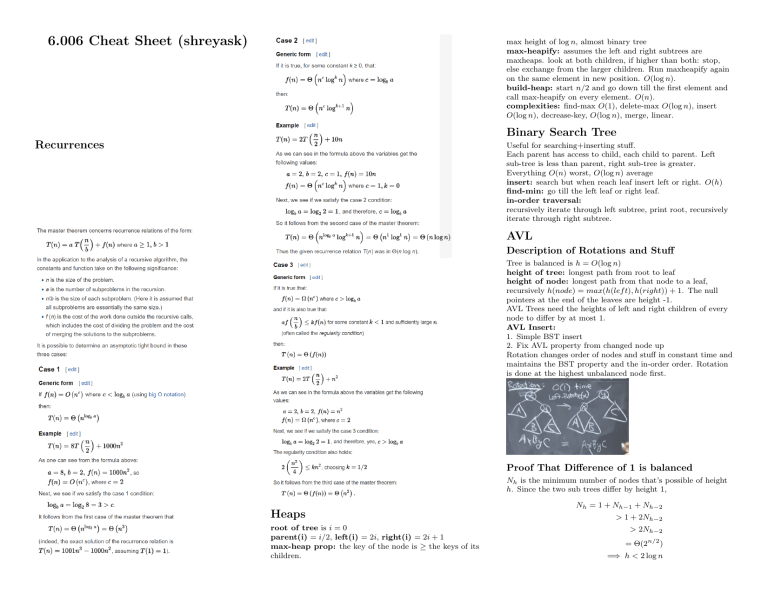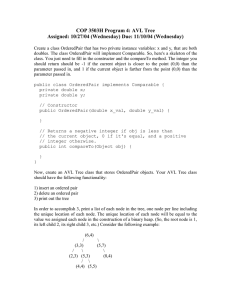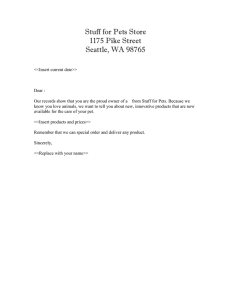
6.006 Cheat Sheet (shreyask) max height of log n, almost binary tree max-heapify: assumes the left and right subtrees are maxheaps. look at both children, if higher than both: stop, else exchange from the larger children. Run maxheapify again on the same element in new position. O(log n). build-heap: start n/2 and go down till the first element and call max-heapify on every element. O(n). complexities: find-max O(1), delete-max O(log n), insert O(log n), decrease-key, O(log n), merge, linear. Binary Search Tree Recurrences Useful for searching+inserting stuff. Each parent has access to child, each child to parent. Left sub-tree is less than parent, right sub-tree is greater. Everything O(n) worst, O(log n) average insert: search but when reach leaf insert left or right. O(h) find-min: go till the left leaf or right leaf. in-order traversal: recursively iterate through left subtree, print root, recursively iterate through right subtree. AVL Description of Rotations and Stuff Tree is balanced is h = O(log n) height of tree: longest path from root to leaf height of node: longest path from that node to a leaf, recursively h(node) = max(h(lef t), h(right)) + 1. The null pointers at the end of the leaves are height -1. AVL Trees need the heights of left and right children of every node to differ by at most 1. AVL Insert: 1. Simple BST insert 2. Fix AVL property from changed node up Rotation changes order of nodes and stuff in constant time and maintains the BST property and the in-order order. Rotation is done at the highest unbalanced node first. Proof That Difference of 1 is balanced Nh is the minimum number of nodes that’s possible of height h. Since the two sub trees differ by height 1, Heaps root of tree is i = 0 parent(i) = i/2, left(i) = 2i, right(i) = 2i + 1 max-heap prop: the key of the node is ≥ the keys of its children. Nh = 1 + Nh−1 + Nh−2 > 1 + 2Nh−2 > 2Nh−2 = Θ(2n/2 ) =⇒ h < 2 log n Practically Useful Stuff Radix Sort Everything in O(log n) time. Access, Search, Insertion, Deletion, Find-Max, Find-Min, Successor, Predecessor and stuff. (Cause height is maintained.) Execute stable counting sort from MSB to LSB. O(wN ). w is the number of bits in a word. Search Bound Python Costs Decision Tree: any comparison algorithm can be viewed as a tree of all possible comparisons and their outcomes and resulting answer. For searching, tree is binary and must have at least n leaves for each answer. Height has to be at least log n of that object → integer. Chaining if collision, store as a list. Worst case O(n), any hashing. But randomized? SUHA: each key is equally likely to be hashed to any slot of the table, independent of each other. Proof of Constant Time: expected length of chain n/m = α load factor. n is keys, M slots. N (N − 1) 1 2 M P (collision) = 1/m collisions = P (query correct) = (1 − 1/m)n−1 Comparison Sort Lower Bound Random Useful Stuff Decision tree is binary, number of leaves is greater than number of possible answers, which is n!. Height > log n! =⇒ Height > O(n log n) f (n) = Cheaty Sorts n X log x = Θ(n log n) x=1 Counting Sort Allocate memory with the number of keys with zeros. Go through given array and update the counts in the count array. Cumulative frequencies and then place from last to first in that spot. O(n + k) where k the maximum value an element can take. Only heap sort isn’t stable. Only insertion and heap is in place. Hash Tables Pre-Hashing, whatever key we have, we convert to non-negative integer by just taking the binary representation Copyright c 2014 Winston Chang http://www.stdout.org/∼winston/latex/



